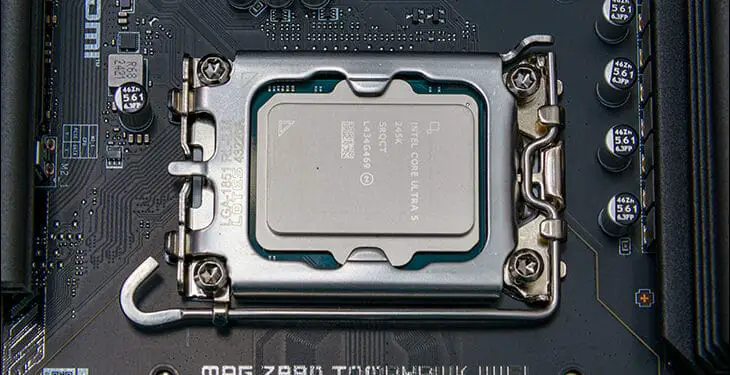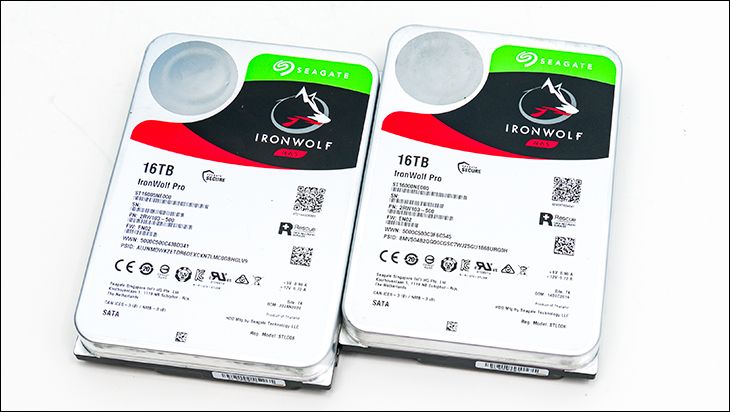There is (a fake) ancient West Taiwan curse that goes “may you live in interesting times”. While that saying is pretty much bollocks, and is about as Chinese as our mostly Irish/Scottish/British/Spanish ancestry would infer, it has indeed been a ‘interesting’ year for Intel. Arguably two interesting years… in a row. Between 14th Gen ‘rehash’ controversy and (more recently) the whole micro-code debacle Intel really, really… really need some good news. Sadly, for the past couple months things started to look more and certain that Intel was going for a hattrick of humiliation. Their promised, delayed, re-promised, and further delayed 2nm “20A” Node process (finally) got a fork stuck in it due to the fact they couldn’t get it to work at production levels. The sunsetting “Core -I” in favor of even more confusing name. Hell, Intel Arc ‘Battlemage’ delayed until 2025… things were certainly looking grim for Big nu-Blue Intel that is for sure. Thankfully, you will note our use of the past tense “were” as Intel were able to shift gears and get their first of its kind (for desktop) Intel Core Ultra 200-series out the door before investors came a knockin’ in the middle of the night… with pitchforks and chanting old timey Max’ Robespierre quotes.
On the surface, and given the long list of downward trends, being upbeat does seem a bit misplaced. After all, the release of a new generation of Intel CPUs should come as no surprise. It is almost like clockwork that it happens… as we the consumer have been trained to expect an Intel response to AMD CPU series launch, who in return respond to Intel’s launch… who in turn responded to AMD… ad nauseum. Yes, it is almost pavlovian to expect a new generation of CPUs (and chipset) from one of the Big Two shortly after the release of a new generation of CPUs (and chipset) from the other of the Big Two.
This year was shaping up to be different and rumormongers were slightly favoring a delay in “15th Generation” release date due to the continuing problems Intel 20A fab process were running into. Afterall, 20A was supposed to be the linchpin of the upcoming debutante ball for Core Ultra series. Thankfully, Intel is nothing if not resourceful and with a quick changing of gears (due in no small part to only two of the Tiles needing a node change) here we are with Intel 15th Generation… err… Intel Core Ultra 200-series formal entrance into polite (and not so polite) society.

Make no mistake, last minute crises or not the Core Ultra 200-series promises to be different than previous Desktop Core -I series. Namely, by…. offering more of the same. The same quantity of P and E cores, but with noticeable improvements in multiple sub-components. If that sounds about as exciting as a “friendly conversation” with the IRS. You would be wrong, but easily understandable on why your assumptions are incorrect.
Take for instance, the Core Ultra 9 285 K. Yes, it is a mouthful compared to Core i9 14900K, but just as the name has grown in length so too has the capabilities. Albeit not in shear quantities. Sure the L1, L2, and L3 have all grown (896+1536KB/24+8MB/36MB vs. 640+1536KB/16+8MB/36MB) but the core count and breakdown has not – 8 P Cores with 16 E-Cores. In fact, for the slight bump in E-Core frequency (4.6 vs 4.4) the P-Cores seemed to have been… cough… “toned down” by (up to) a couple hundred MHz (5.7/5.4 vs 6.0/5.5).
Even the Core Ultra 5 245 K which replaces the Core i5 14600K does not appear to have changed all that much. Same number of P and E-Cores (6+8), similar (albeit lower) P core frequency of 5.2 vs 5.3. Only a smidgen more cache (672+768KB/18+4MB/24MB vs 480+768KB/12+4MB/24), and an extra dollop of hopium on the E-Core frequencies (4.6 vs 4.0) is about all that appears to have changed. In fact, with Intel reducing the asking price it could be considered ‘worrisome’ as the ‘5-class’ is one of the biggest sellers for both AMD and Intel.

This however is missing the forest for the trees. First up, is this new series is Tile and not Monolithic based. Meaning different parts of the Processor are built on different fab processes… and all are made by TSMC. Not Intel. Yes, the Core Ultra 200 series is the first Intel branded mainstream desktop CPU series to not be made by Intel. Which easily negates any worries over ‘oxidation’ due to improper fabrication processes… even if this must have been Kidney plus a Bladder stone levels of pain inflicted on Intel’s pride to do so.

The next big change, that gets lost in the backlash over reduced frequencies, is double digit IPC gains. Which in the case of the E-Core architecture are not just double digit, but down right massive. Thus the promise of improved overall performance with noticeably reduced power consumption (and heat) is what goes hand in glove with these new CPUs and their seemingly lackluster paper specifications. Mix in a zero price increase for the 9 class, and a modest reduction in the 5s, and this increased efficiency combined with overall value is what Intel is banking on being seen as a winning combination. So much winning that to borrow a quote “…(When you buy Intel) your gonna win so much, you (the consumer) may even get tired of winning. And you’ll say, ‘Please, please. It’s too much winning.”
That at least is the theory behind what Intel has done, and why they have done it.
In reality, it remains to be seen if this first generation of Tiles are big enough, fast enough, and good enough to overcome the… negativity associated with Intel right now. For the sake of the industry we hope. Intel and AMD fans alike need Intel to quickly regain their glory and push prices down while pushing the industry forward faster than ever before. So let’s dig in and see what has actually changed, and how those changes impact overall performance in the real world!








